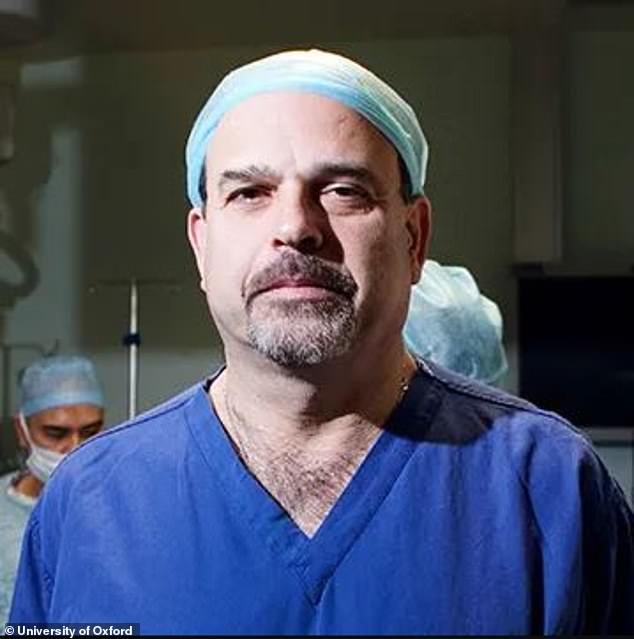Surgeons may soon be able to remove prostate cancer better thanks to a dye that makes tumors glow.
Experts at the University of Oxford said the dye acts as a “second pair of eyes”, illuminating cancerous tissue invisible to the naked eye.
This allows doctors to remove a larger amount of cancer in real time, reducing the chances of the disease coming back due to cells left behind.
Cancer Research UK, which funded the scientists, said full clinical trials are underway to determine whether surgery with the dye removes more prostate cancer and preserves more healthy tissue than existing surgical techniques.
Oxford University experts said the dye acts as a “second pair of eyes”, illuminating cancerous tissue (file photo)

Professor of Surgery Freddie Hamdy (pictured) said the technique “allows us to preserve as much of the healthy structures around the prostate as possible.”
In an early study, 23 men with prostate cancer were injected with the tracer dye before undergoing surgery to remove their prostate.
When the prostate and nearby regions were illuminated with light (white and near-infrared), the fluorescent dye illuminated the cancer cells and where they had spread to other tissues, such as the pelvis.
Professor of Surgery Freddie Hamdy, from the University of Oxford and lead author of the study, said: “This is the first time we have been able to see such fine details of prostate cancer in real time during surgery.”
He said the technique “allows us to preserve as much healthy structures around the prostate as possible, to reduce unnecessary life-changing side effects such as incontinence and erectile dysfunction.”
The technique works by combining the dye with a molecule that attaches to a substance known as an antigen, which is found on the surface of prostate cancer cells. It is hoped that the dye could also be used for other cancers.
The Daily Mail has been fighting for many years to give more visibility to the most common cancer in men, through its End Needed Prostate Deaths campaign.


